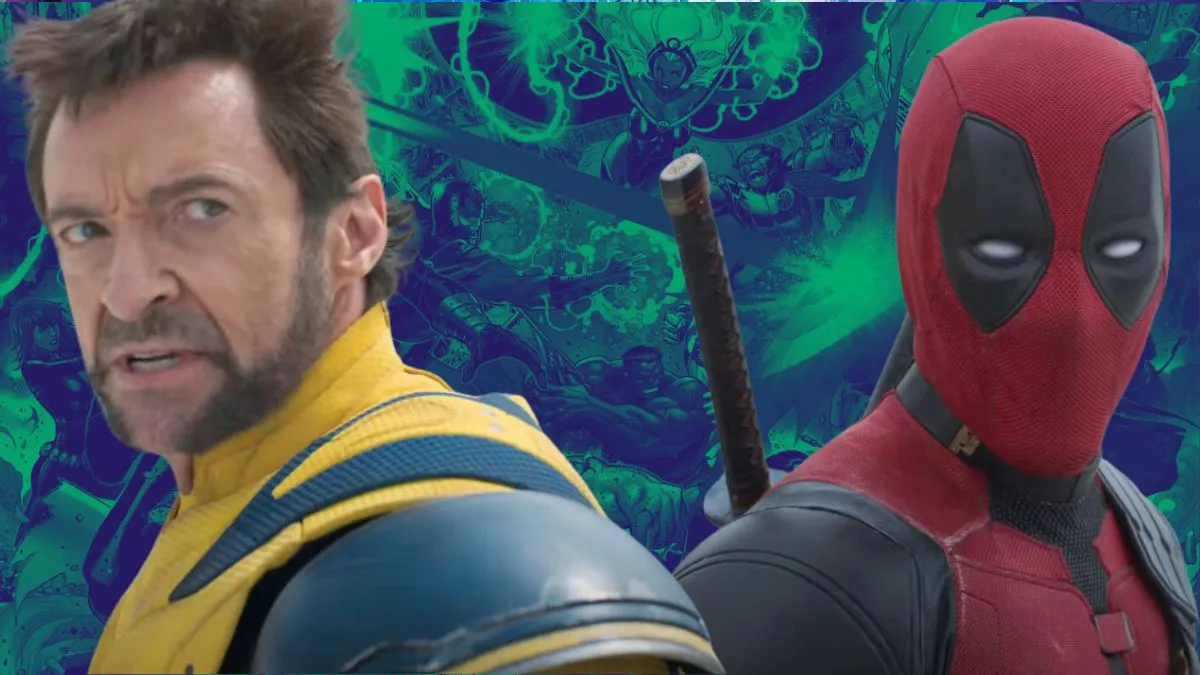
Six episodes were provided prior to broadcast.
The premise of Amazon’s The Man in the High Castle is still as grimly transfixing today as it was back in 1962 when Philip K. Dick’s source-material novel first hit shelves: what if the Axis Powers had triumphed in World War II, conquering the United States and dividing it into a Nazi-controlled east, a Japan-ruled west and a lawless neutral zone in between? And as executed by renowned X-Files writer Frank Spotnitz, the series is every bit as nightmarishly gripping as its literary namesake, a portrait of alt-history America so richly, intricately sketched that it almost immediately feels that most chilling of adjectives for a show of this nature: plausible.
In The Man in the High Castle‘s chilling reality, the year is 1962, and the Führer, though alive, is old and graying. The prospect of his imminent death adds new complexity to the already-fragile truce between Japan and Germany, and many – including Japan’s trade minister (Cary-Hiroyuki Tagawa) and a senior Nazi official (Carsten Norgaard), who conspire against their respective governments in hope of maintaining peace – fear that his passing could usher in a new era of calamitous bloodshed. Meanwhile, American society has capitulated to the totalitarian rule of German and Japanese forces. U.S. flags are riddled with swatstikas, the few surviving Jews have been driven deep underground, and a brutal police force executes any accused dissidents with brutal efficiency.
It’s soon revealed that the war was lost once Hitler gained possession of an A-bomb and detonated it over Washington, wiping out the U.S. government and utterly crushing the country’s willpower. For the most part, civilians have adjusted to life under enemy rule – fascist symbols and ideology have completely permeated the basic fabric of American life, and most spend their days trying to convince themselves that nothing has really changed, despite all evidence to the contrary. (In one chilling scene, a highway cop casually explains that snow-like ash falling from the sky emanates from the nearby hospital, where the state incinerates the sick and injured. In another, characters dance around the fact that a mass genocide of the Jews took place shortly after the end of the war.)
Some did try to fight, with little success, but the vast majority have simply accepted life under enemy occupation as the new normal. When characters greet each other with “Sieg Heil” and an enthusiastic Nazi salute, what’s most chilling about the gesture is how ordinary it feels. Spotnitz and company are masters at world-building, and they’re meticulous in their approach to fleshing out this conquered shell of the United States, from large-scale developments (the creation of massive Nazi headquarters that towers over the New York skyline) to bizarre, minute details (a child reading a Ranger Reich magazine).
In truth, The Man in the High Castle‘s visual storytelling trumps its narrative thrust any day – the bleak, bombed-out setting is gorgeous to behold, and there’s so much packed into every scene that one is tempted to hit pause and rewatch. Though some may argue Transparent is the more flawlessly executed Amazon original to date, this is without a doubt its most ambitious and inventive.
If the series focused exclusively on its warped inversion of American society, or on the high-stakes political chess game being played out between leading Japanese and German officials, it would have enough material to sustain itself, but The Man in the High Castle instead turns its focus to a handful of lower-level characters living within the country’s carved-up remnants. Over in San Francisco, which is ruled by the only slightly less brutal Japanese government, Juliana Crain (Alexa Davalos) studies martial arts and has learned to differentiate the Japanese culture from its merciless military. Her boyfriend Frank (Rupert Evans) is a meek artist content to live out his days under the radar, especially if that means his Jewish ancestry never comes to light. These two are more than aware of the atrocities committed by their new governments, but they lack the support, courage and strategy to do anything about it.

When Juliana’s sister Trudy winds up dead for the crime of transporting a forbidden film reel titled The Grasshopper Lies Heavy, it falls to Juliana to find out exactly what illicit activities her sister was involved in. And upon viewing the film, she’s thrown for a loop – created by the subversive Man in the High Castle, it depicts an alternate history (in other words, ours) in which the U.S. won the war.
Impossibly, the footage seems real, showing the Allies conquering Axis forces in key locations, raising U.S. flags and eventually declaring victory over the Nazis. Obviously, possession of the film is a capital offense, but Juliana feels she’s obligated to carry out her sister’s failed mission and so she takes off into the neutral zone, bent on reaching the Rockies. Little does she know that this flight brings the full force of the government down on poor Frank, whose subsequent detainment and torture sends him down a radical path of his own.
Along the way, Juliana encounters New Yorker Joe Blake (Luke Kleintank), a Nazi agent posing as a resistance fighter, and the pair become close as they square off with a hilariously mannered bounty hunter (Burn Gorman) and attempt to rendezvous with Trudy’s elusive contact in an Old West-esque town called Canon City. Meanwhile, Joe reports back to Obergruppenführer John Smith (Rufus Sewell), a ruthless if complicated Nazi official who’s shockingly compelling not as a clear-cut villain but as a conflicted man forced to embody the inhumanity of an oppressive regime.
The first six episodes (all those provided to press ahead of release) consistently surprise in how they deepen those characters and weave their journeys together. When two individuals intersect, their meeting feels organic and generates genuine suspense, rather than seeming forced or unnecessary. And the performances are strong enough, particularly Sewell’s, that the show easily glides over any stretches of uneven pacing or dialogue. Even when the show is jumping between an assassination plot in San Francisco, Juliana’s perilous excursion in Canon City and Smith’s plotting over in New York, it holds together remarkably well.
What fascinates more than the news reel plot, though, are the series’ larger mysteries and implications. Is The Grasshopper Lies Heavy an extraordinarily well-crafted piece of propaganda capable of rousing the U.S. population to revolution? Or does it actually somehow peer into an alternate reality – and hold the key to escaping the timeline in which the Axis Powers conquered all? And on a broader scale, when one considers the series’ complex depiction of a broken, subverted Americana, just how much evil are people willing to overlook in the name of safety and security?
The Man in the High Castle suggests that the answer may be a whole lot, and its commentary on the matter feels shockingly timely, given the frankly horrific, blatantly xenophobic policies currently being backed by some presidential candidates, as well as the United States’ deeply unsettling response to the Syrian refugee crisis in the aftermath of Paris.
Fascism and democracy aren’t mutually exclusive concepts, and the series takes great pleasure in setting up scenarios in which it becomes clear that this world’s evils are perpetrated not just by the Nazis and Japanese but by the civilians who take monstrous crimes against their fellow man in stride so long as they’re allowed to live in relative comfort. Perhaps the show’s most laudable accomplishment is how it pushes us to see the humanity in the Nazis, and the potential for monstrous evil present in all those who blindly follow the guidance and bend to the will of their leaders. That good old quote often attributed to Edmund Burke – “The only thing necessary for the triumph of evil is for good men to do nothing” (as if you didn’t know the one) – is directly utilized at one point in The Man in the High Castle, and it gets an addendum as well: once evil has triumphed, it seems, the only thing necessary for its perpetuation is for good men to deem it normal.






